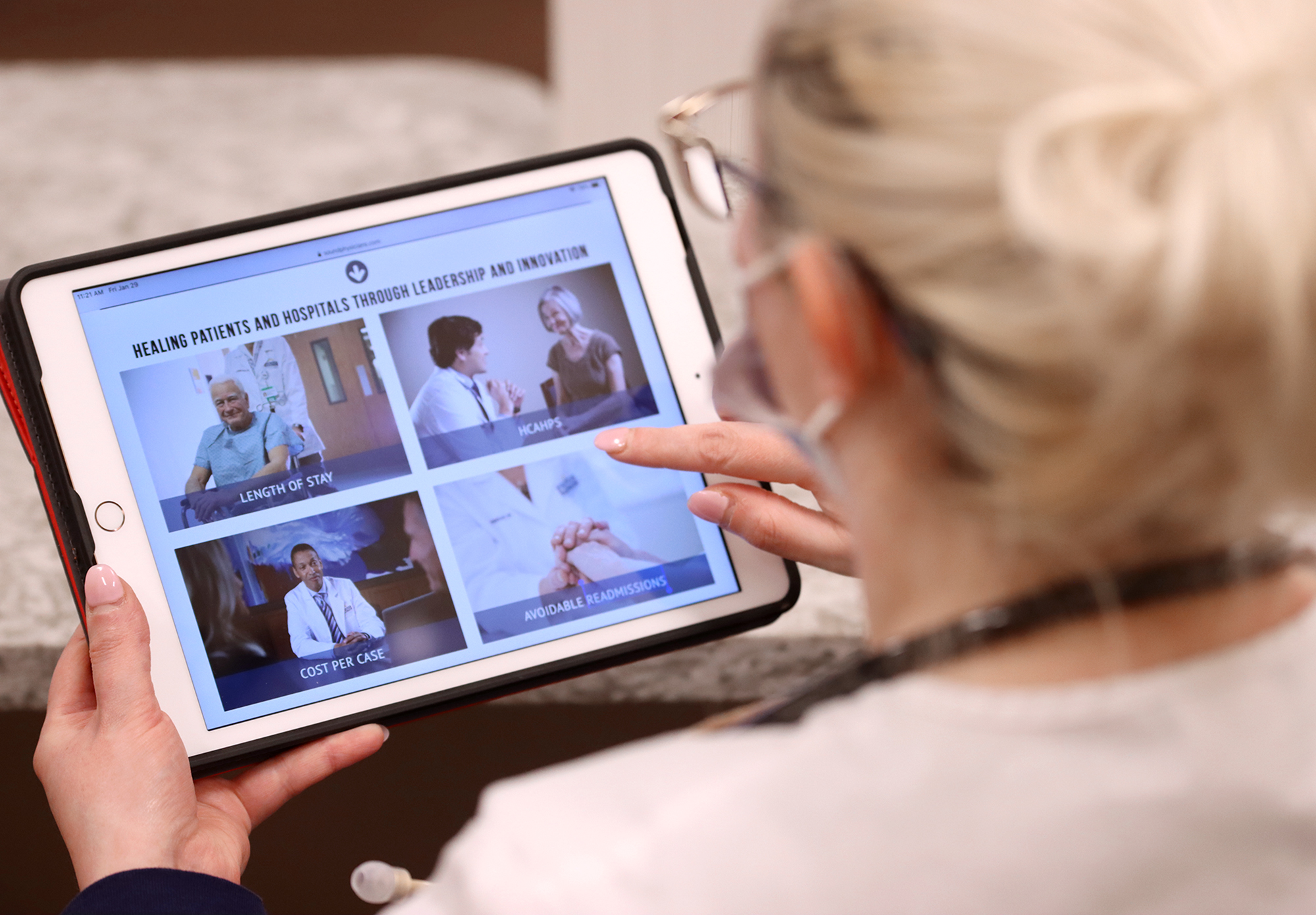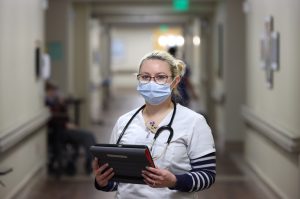March 3, 2021
Telemedicine: The Future of Post-Acute Care

Hospital admissions, staffing, infection control, and financial vitality are but a few issues keeping senior living facility leaders up at night. COVID-19 compounded these challenges and created an unprecedented need for innovations in safety measures, clinical care delivery, and efficiencies. Today, telemedicine solutions are in the spotlight, and facilities that adopt a solid telemedicine program will be well-positioned to help post-acute care thrive in a post-COVID world.
We had the opportunity to talk with Chief Strategy Officer Carmen Fronczak and Skilled Nursing and Rehabilitation Administrator Stacey Zerban, from Friendship Village, a senior living community in St. Louis, Missouri, offering a continuum of care, including skilled nursing and long-term care. One of only 16% of senior living communities in the nation to be accredited by the Commission on Accreditation of Rehabilitation Facilities, Friendship Village recently made the strategic pivot to Sound Telemedicine at their Sunset Hills location, to give nursing staff and residents on-demand physician care on nights, weekends, and holidays. We want to share part of Carmen and Stacey’s conversation with other senior living communities, nursing facilities, and long-term care administrators considering telemedicine.
Sound Physicians: Stacey, Carmen, it’s great to chat with you. We’re excited about our partnership with Friendship Village and hope you can discuss why you decided on telemedicine and specifically Sound’s program?

Carmen: When I started at Friendship Village four years ago, we focused on life care and independent living. But, as our post-acute business and strategy grew to include a bigger focus on skilled nursing, we needed additional clinical expertise. Early identification of symptom changes in our residents and how to address them internally, instead of sending residents out, became paramount.
Partnering with Sound fits our mission and gives us additional strength. Our business model calls for more post-acute business, but we needed to develop specialized expertise and a stronger clinical foundation. The access we now have to virtual care on nights, weekends, holidays, or whenever required empowers us to grow our business and take even better care of our residents.
SP: What were you looking for in a Telemedicine Partner?

Stacey: One of the reasons Sound Telemedicine was a match for us is that most other telemedicine programs only manage select portions of our resident populations. This is a big obstacle because our facility draws from a wide assortment of hospitals and payer sources. Our nurses need a simple one-stop solution. Like one-stop shopping, right? You do not want to have to call three different sources to take care of three different patients. The complexity of an emergency, special need, or late-night issue is compounded by relying on multiple partners and poses a risk to expedited care. Sound’s solution is seamless, and when my nurses see a change in a resident’s condition, they can now quickly pick up their iPad and their stethoscope, hit the Sound button, and a physician is there to take care of any of our patients!
Nurse “Buy-in” is also critical, and our staff saw immediate benefits in their first user experiences. The quick response time and the physician of engagement are great.
Carmen: The program also gives our medical director and attending physicians support. Also, the fact Sound does a lot more than just changes of condition differentiates you. Yes, much of our work entails changes in our residents’ conditions, but Sound can also help us with things like admissions and lab work. Of course, we are excited about using cloud-based technology and iPads to deliver care, but what really makes the program is the on-demand access to highly engaged hospitalists who can meet our residents’ specific needs.
SP: How did hospital admissions and readmissions concern factor in your decisions?

Carmen: We are measured so much on returning people to the hospital, something we try to avoid. Admissions and readmissions are very costly, emotionally draining, and time-consuming for residents and their families. Sound has a reputation and track record for helping reduce unnecessary admissions.
As one of the top-rated facilities in the area, we continuously focus on keeping our residents safely in place. Now that we have on-demand care from hospitalists with the specific skills to treat acute episodes, we expect to see positive trends and results.
SP: Do you see our telemedicine program impacting your staff’s morale and retention rate?
Stacey: You know, people are in this business because they are passionate about care. We have an exceptional staff, but the last year has been very challenging. If we can give our staff more effective tools, education, and support, they will be more engaged and satisfied. We want to empower them to provide the best possible care.
While vaccines bring new hope, we still have a long way to go, and the best care requires new strategies. COVID will continue to be a significant challenge in 2021, but telemedicine is here to stay when the pandemic wanes. We feel like we now have the right partner for future success. It’s been a major boost for our staff.
SP: Thanks to both of you for sharing your thoughts.
There is no doubt that hospital readmissions, staffing challenges, infection control, and financial sustainability will continue to be significant challenges for skilled nursing and long-term care communities. Choosing a telemedicine partner who can seamlessly increase a community’s clinical capacity will be one of the keys to future success.
If you are interested in learning more about Sound Physicians’ telemedicine program for skilled nursing facilities, visit soundtelemedicine.com.
